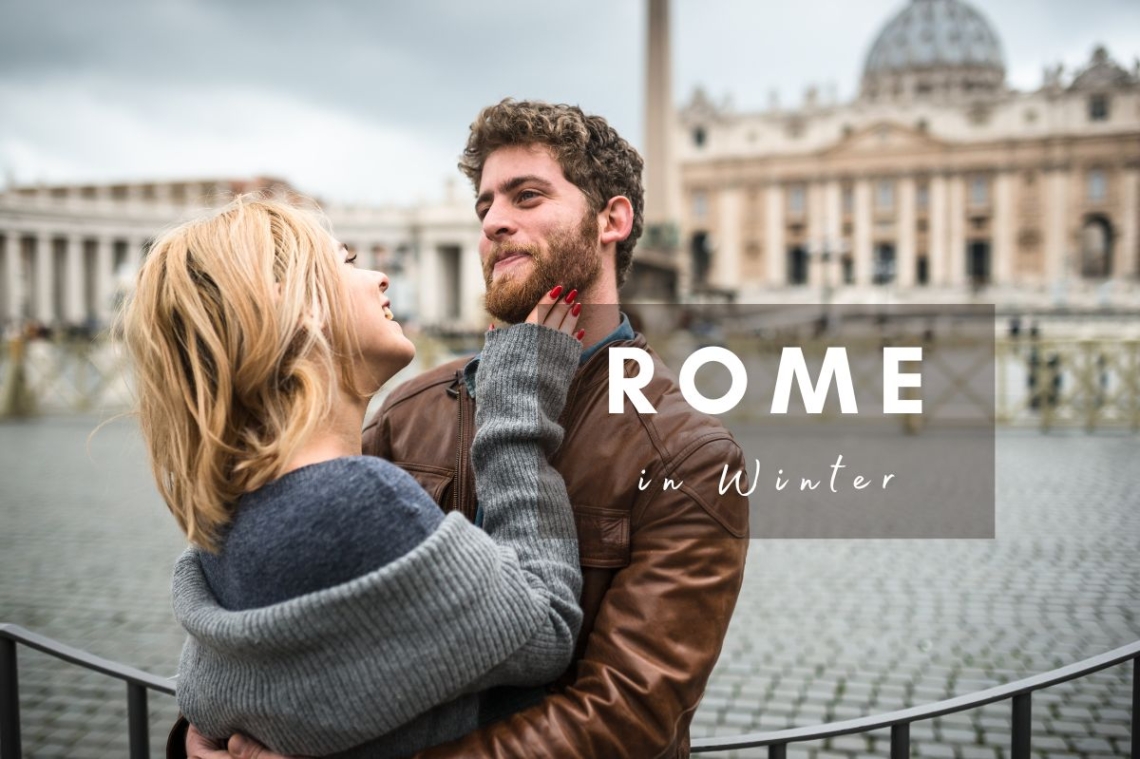
Rome in Winter: Exploring the Eternal City in the Off-Season
Rome is one of the most amazingly beautiful cities in the world. With its old architectural buildings, art galleries and museums, and delicious good, spending a few days here will feel like too short a time. Most people visit Rome from June to August, but if there’s one secret that locals can attest to, it’s this: Rome in winter is a great time to visit too!
During winter, indoor attractions remain open and, what’s more, you can enjoy lower prices and lesser crowds. You can walk to the Vatican Museums without lining up for hours! Except of course on the days leading to Christmas, which is a peak holiday season in Rome.
Here we’ve written a guide to help you enjoy Rome in winter, including what to expect, what to wear, and what are the best attractions and things to do during this off-season.
Contents
- Weather and temperature
- How to get around in Rome in winter
- What to wear
- Tips for spending winter in Rome
- Things to Do in Rome in Winter
- 1. Vatican Museums and Sistine Chapel
- 2. See the attractions without the crowds
- 3. Wander around the cobbled streets
- 4. Wine and food tasting tour
- 5. Nightlife in Trastevere
- 6. Join a cooking class
- 7. Take a dip in thermal baths near Rome
- 8. Indulge in comfort food
- 9. Enjoy the Festive Season
- 10. Enjoy great shopping deals
Weather and temperature
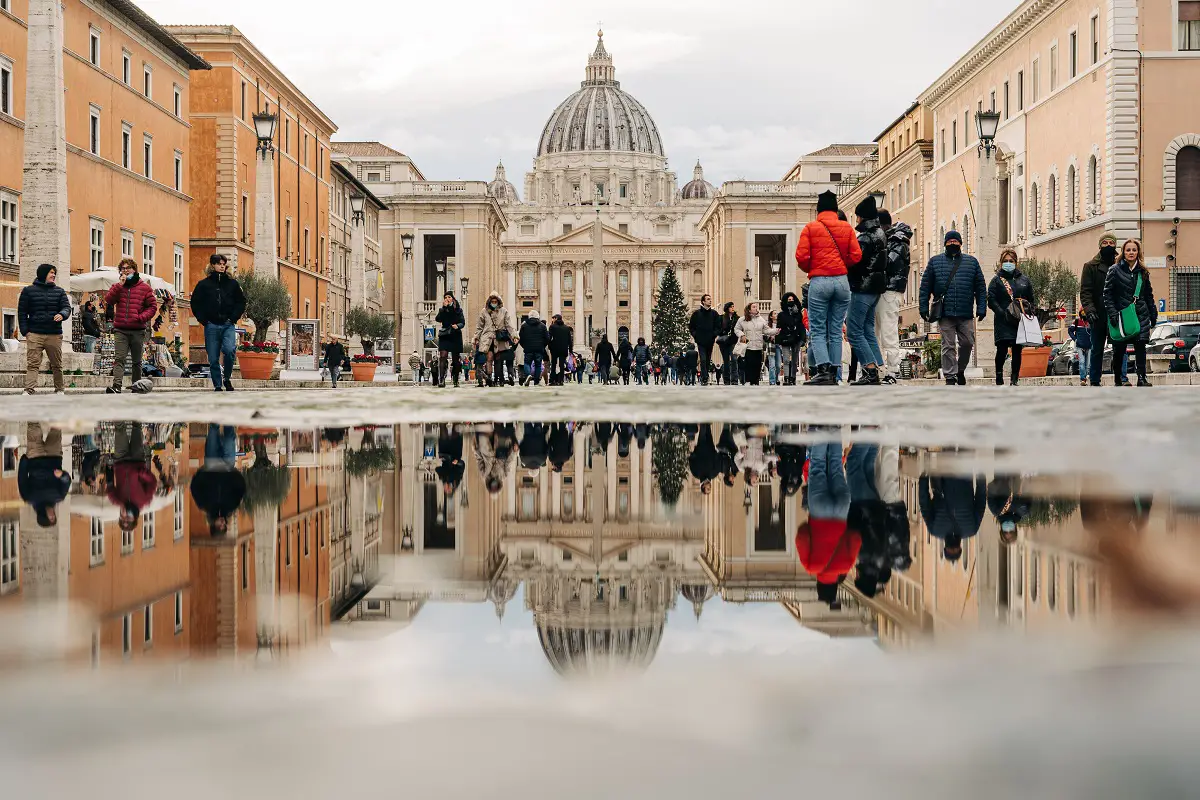
Winter in Rome usually spans from December to February, but may also extend in the months of November and March.
Rome experiences mild winters, with the average temperature ranging from 8°C (46°F) to 15°C (59°F). Winter months are filled with occasional cold snaps and rainfalls. It rarely snows, and when it does, it’s usually from February to March. It’s also less cold compared to other European countries. On the whole, you can expect pleasant weather and less energy-sapping heat compared to summer months.
Here is the weather in Rome based on months:
November
November sees the transition from the chilly autumn to colder months of winter. The first half of the month has an average temperature of 15°C (59°F) which drops to 10°C (50°F) in the latter half of the month.
December
December is a cold month, but it’s also bright and crispy and it’s a wonderful time to visit for the holiday festivities. The average temperature drops to 7°C (44.6°F). Nights can be chilly and there is a high chance of rainfall throughout the month, so wear appropriate clothing on evenings and bring a raincoat and umbrella when you go out.
January
January is also a cold month, with an average temperature of 7°C (44.6°F) which drops to 3°C (37.4°F) at night. On average, it rains half of the month. January — as well as February — is still one of the most suggested months to visit Rome because after the 6th of January, the holiday crowd is gone and the city settles into a more relaxed pace.
February
In February, the temperature starts to warm up in anticipation of summer, from an average of 9°C (48.2°F) to highs up to 14°C (57.2°F). In most days, you can enjoy basking in the sun, though rain is possible on average of 13 days for this month.
How to get around in Rome in winter
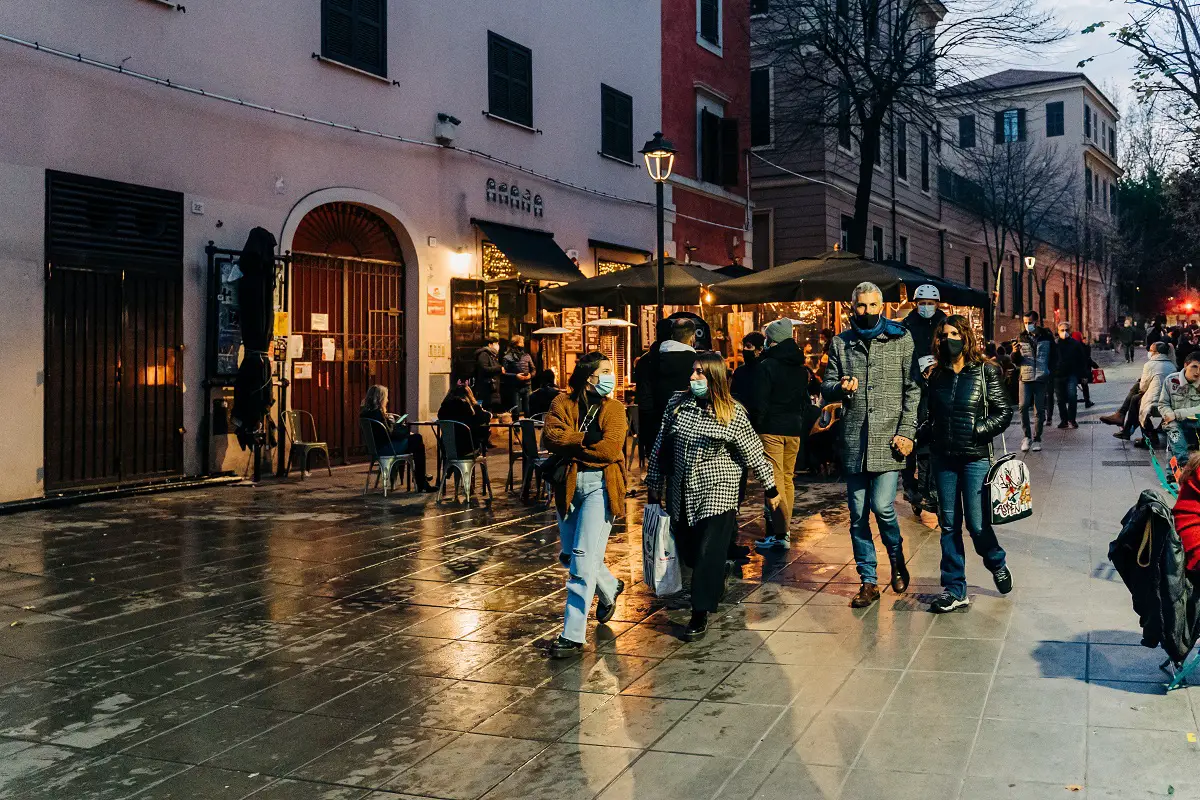
Getting around in Rome in winter is pretty much the same as in summer. Rome is a walkable city and you can explore the historic center on foot. This is more doable in the winter months because it isn’t as hot compared to summer months. Just make sure to wear layers and bring a raincoat or umbrella in case it rains!
Another way to get around in Rome is using public transportation. The city has buses, trams, and a metro system that connects major attractions and neighborhoods. You can get a single ticket for every ride or opt for a 24-, 48-, or 72- hour pass or even a 7-calendar day travel pass.
For easy and convenient transport, there are also Ubers and taxis in the city.
Renting an e-scooter is not advisable particularly on rainy days, since the rain fall and cobbled streets can make it less enjoyable and even unsafe. However, it is a good option on dry days.
What to wear
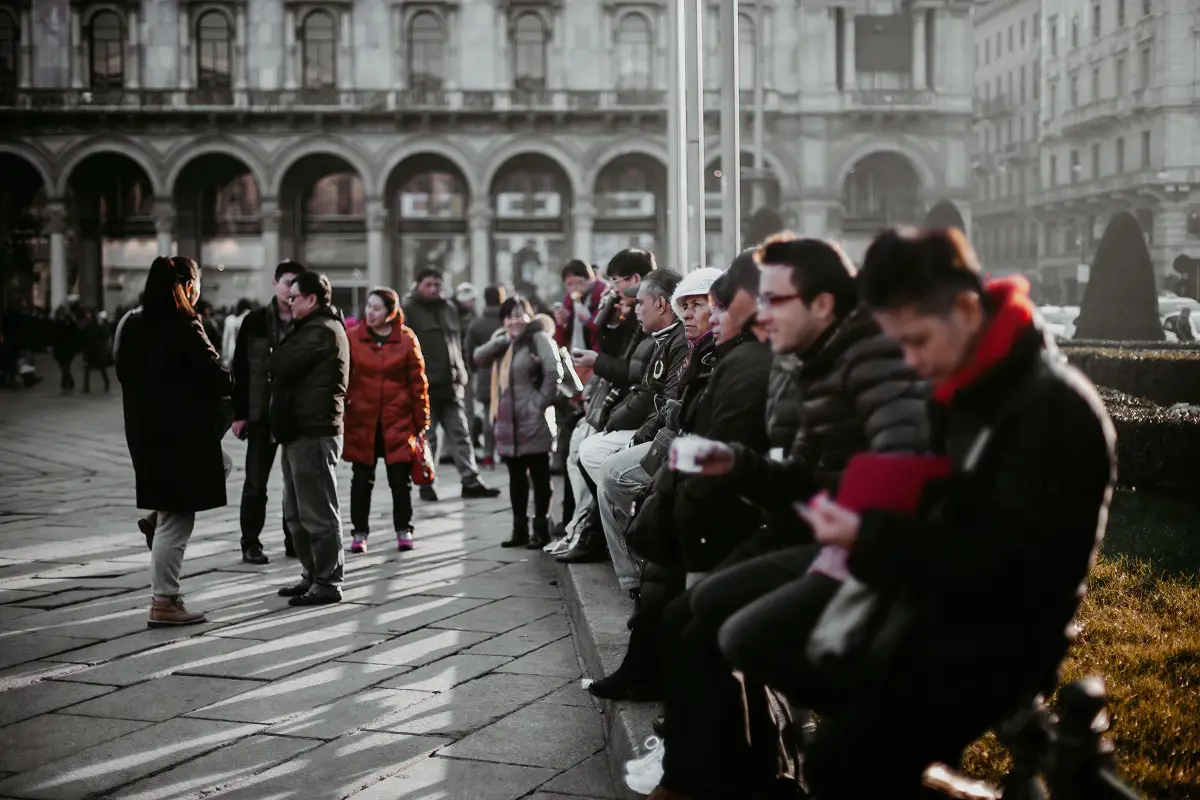
It’s important to dress appropriately to keep yourself warm and comfortable. In the winter months, you may experience brisk morning and cool evenings — the key to enjoying the city during this time is to wear removable layers and comfortable shoes for walking.
Start with a base layer such as a thermal or long-sleeved shirt and then layer with sweaters, cardigans, or jackets. An oversized coat and a cozy scarf is a good choice as they will keep you comfortable — and stylish — on cool mornings and evenings out and can easily be taken off indoors as necessary. For the bottoms, dark-colored pants are versatile and can be paired with various tops.
Here’s a short list of what to wear in Rome in winter:
- Long-sleeve thermal tops
- Dark-colored pants or jeans
- Pull-over sweater
- Winter jacket
- Wool or thermal socks
- Boots or closed-toe shoes
- Scarves, hats, and gloves
Aside from appropriate winter clothing, don’t forget to bring a reusable travel bottle so you can stay hydrated while exploring the capital of Italy. You can refill them in nasoni (public drinking fountains) around the city.
Tips for spending winter in Rome
Here are tips to enjoy Rome in winter!
- If you’re planning a trip to Rome, one of the best ways to experience the city is through a guided Rome day tour. Rome is home to some of the most iconic and breathtaking monuments in the world, and a tour can help you make the most of your time while also providing context and history. Ideally, you’ll want to spend at least 4 days in Rome to experience it fully.
- Even with less tourist traffic, it’s still best to purchase your tickets in advance, so you won’t have to wait outside in the cold.
- Most of the attractions in Rome are open during the winter months, but it’s still best to double-check schedules of commercial establishments and banks during the holidays.
Things to Do in Rome in Winter
Here are the best activities to do in Rome in winter.
1. Vatican Museums and Sistine Chapel
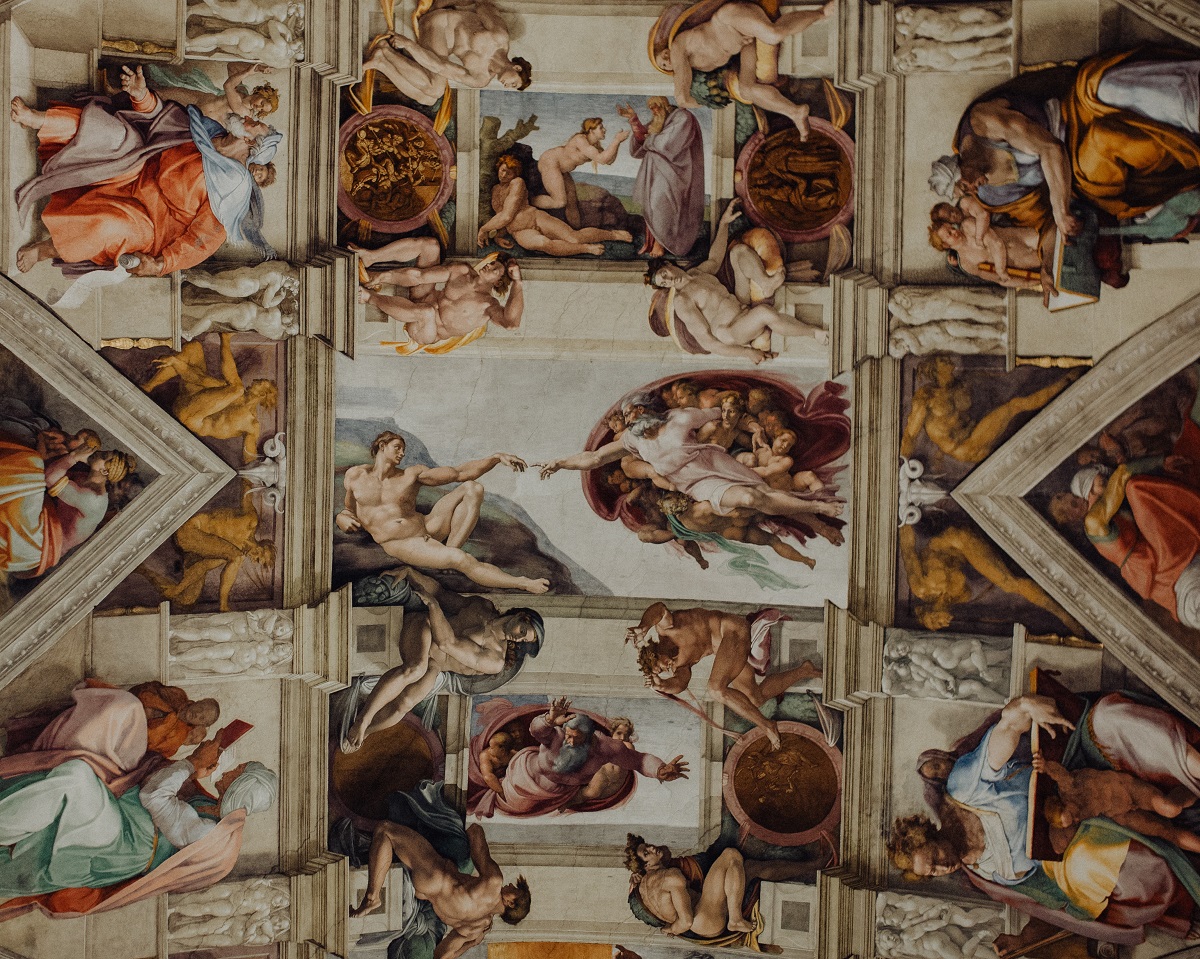
Visiting the Vatican Museums is one of the best attractions in the whole of Italy, especially in Rome in winter. The Vatican Museums are the public museums of Vatican City, housing an extensive collection of art and historical artifacts amassed by the popes of the Catholic Church over centuries. This includes Roman sculptures, masterpieces from the Renaissance Period, and works by world-renowned artists such as Raphael, Leonardo da Vinci, Caravaggio, among others.
It is also home to The Sistine Chapel, known for its exquisite frescoes including Michelangelo’s iconic “The Creation of Adam,” which depicts the biblical story of God giving life to the first man, Adam.
For the rest of the year, the Vatican Museums are bustling with tourists. Hundreds of museum-goers wait in line for the entrance and then crowd together to see the collections inside. During winter especially in January and February, you can just stroll right in, wander pleasantly across the galleries, and get up close and personal with the artworks displayed in the galleries.
While in Vatican City, don’t forget to visit St. Peter’s Basilica as well!
Book a Vatican Museum and Sistine Chapel entry ticket here.
2. See the attractions without the crowds
Seeing the sights in the Eternal City is one of the best things to do in Rome in winter! Queues are shorter and you can take your time admiring the city, built over hundreds of centuries. Here are the best attractions in Rome you can visit during winter:
Colosseum
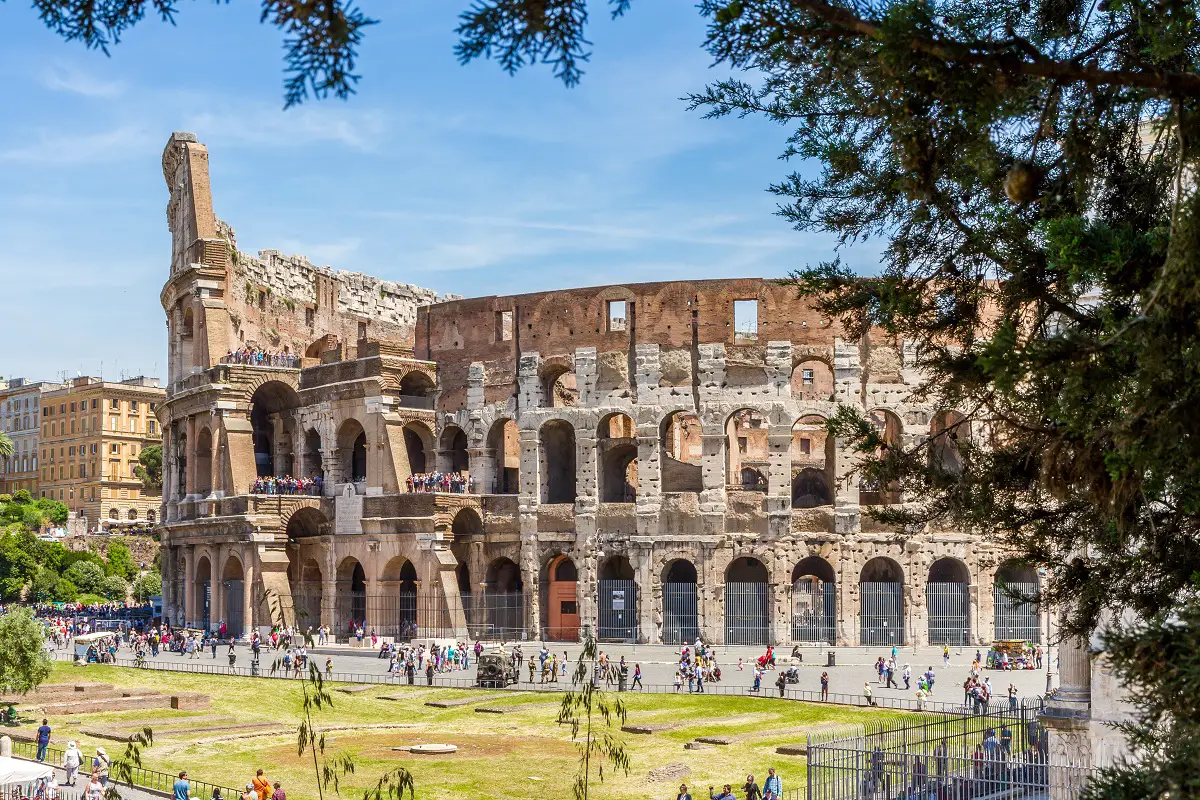
The Colosseum is one of the most famous monuments in Rome. It is an elliptical amphitheater completed in 80 AD during the rule of emperor Titus. It was used as the site for gladiator fights and public spectacles, including battle reenactments and dramas based on Roman mythology, to entertain the Roman people. The whole colosseum could hold up to 80,000 spectators.
Book a Colosseum and Roman Forum guided tour here.
Pantheon
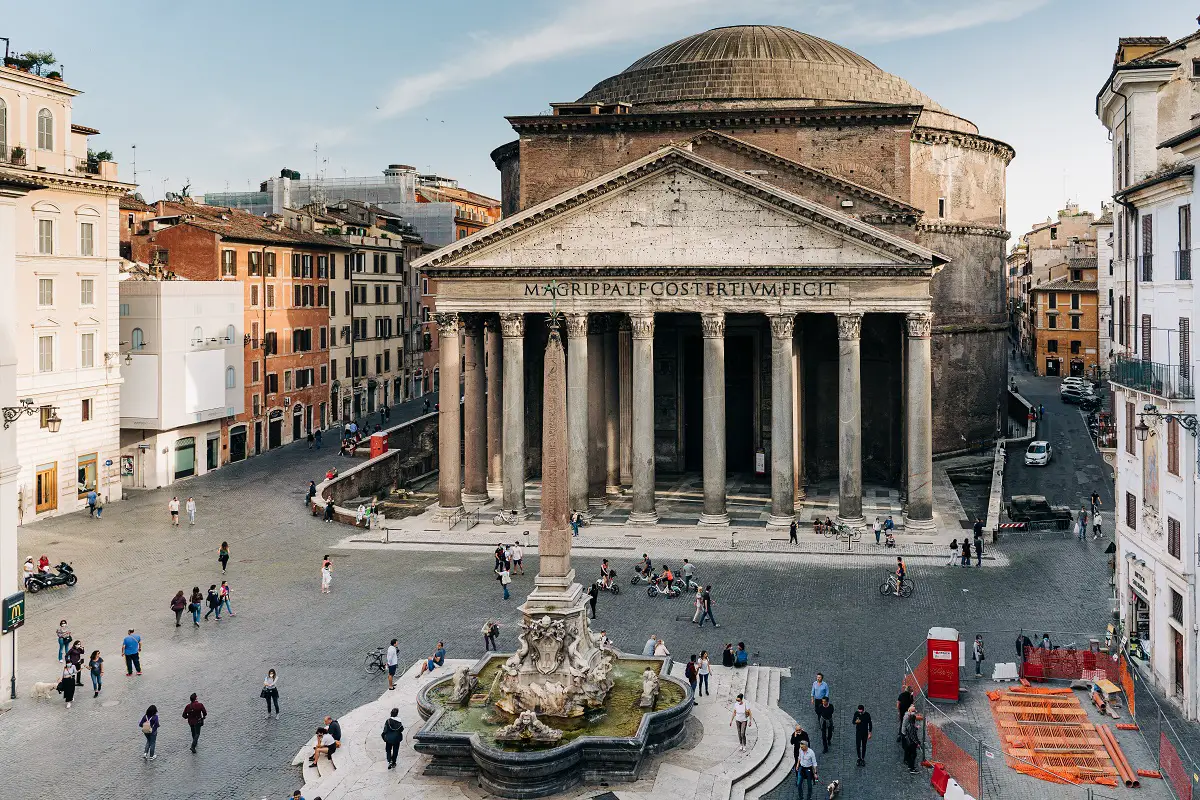
The Pantheon is an ancient temple first built by Agripa between 25 and 27 BC in dedication to the twelve Gods and the living Sovran. It is believed that it was reconstructed to its present architecture by Hadrian in 118-125 AD. Later, it was converted to a church dedicated to St. Mary.
It is a marvel of engineering and design. It is the only ancient building in Rome that has kept intact throughout the years and it also known as one of the largest unsupported domes in the world.
Roman Forum
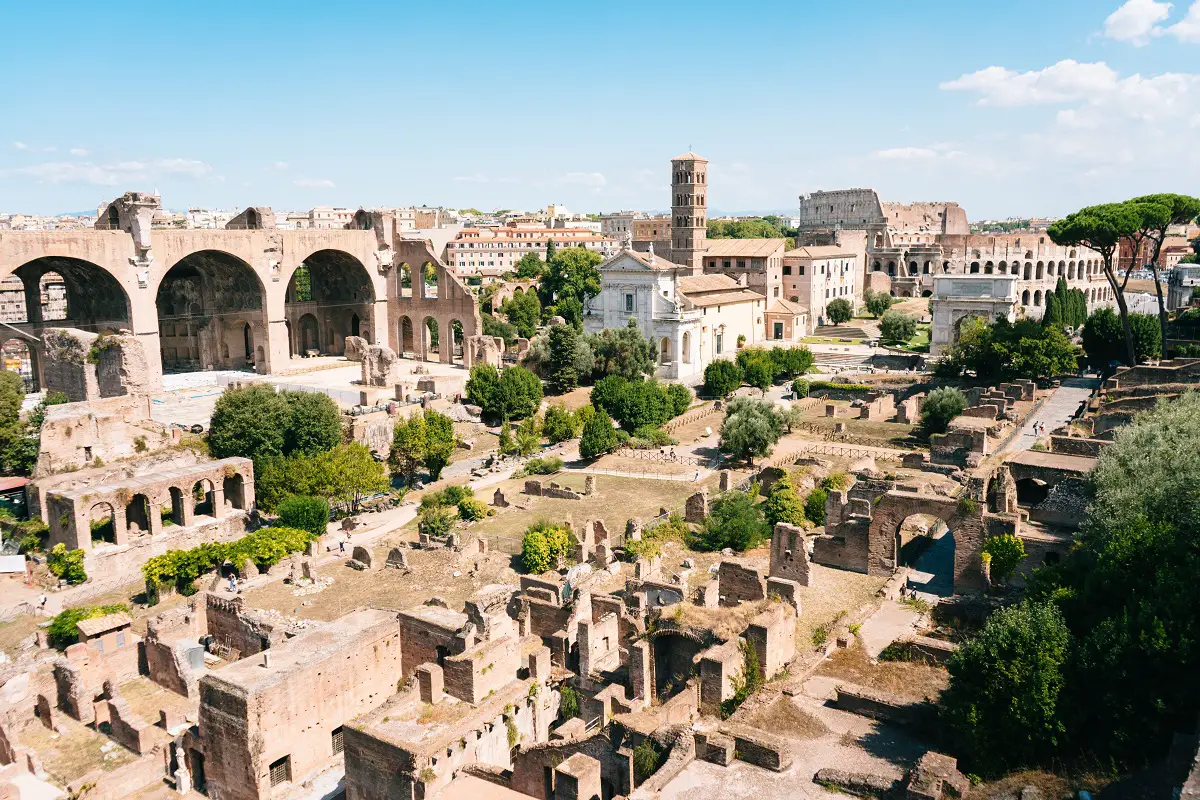
The Roman Forum was the center of ancient Rome. It was the site of important events such as elections, triumphal processions, political speeches, and administration of justice. You can still see a glimpse of the old Roman Forum through its old spare columns, statues, and block of marble. Specifically, you can visit the Temple of Saturn, Temple of Vesta, Basilica of Maxentius and Constantine, Curia Julia, Arch of Septimius Severus, Rostra, and Column of Phocas.
In addition, the Roman Forum is also home to one of the oldest “shopping malls” in the world — the Trajan’s Market. The Trajan’s Market is an architectural wonder with 6 floors and over 150 rooms. It is possible to visit several of the floors and the remains of a library.
Trevi Fountain
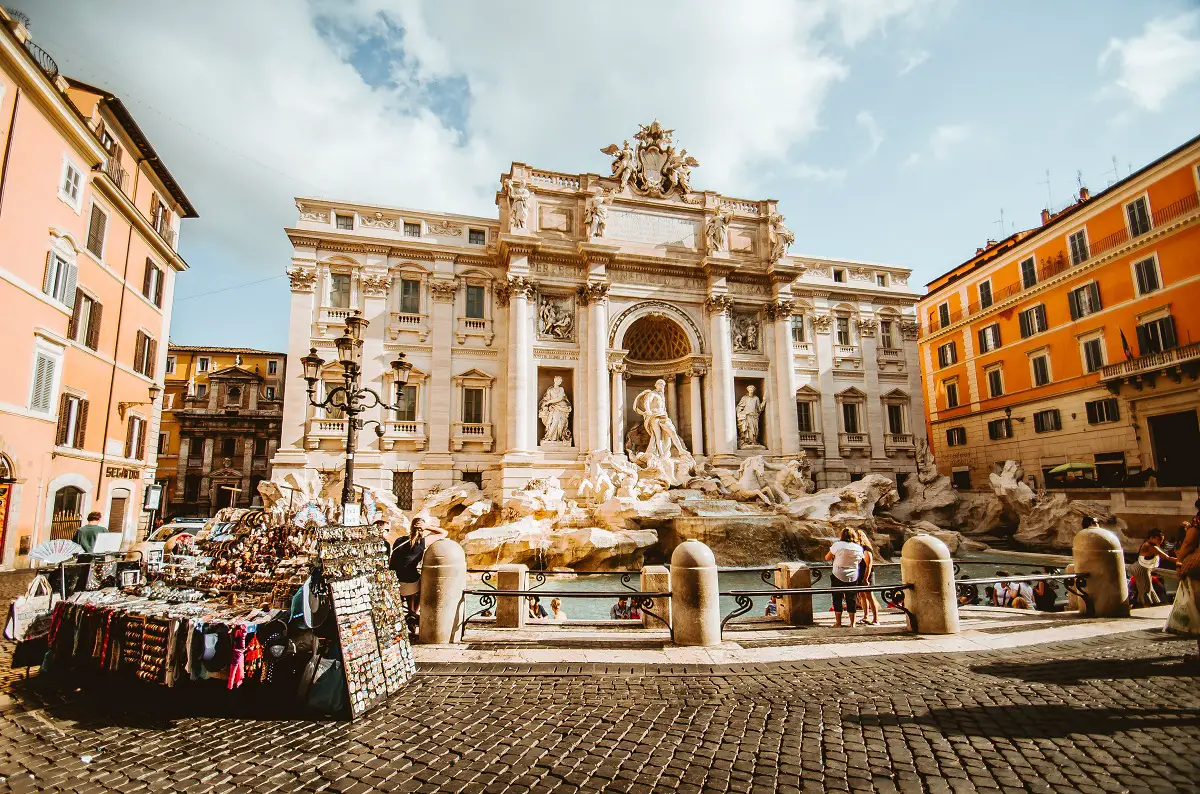
The Trevi Fountain is one of the most iconic fountains in the world and it is often seen as a symbolic of luck and love. Legend has it that if you throw a coin into the fountain, you will return to Rome.
This fountain is one of the best attractions in Rome in winter! And no, it does not freeze over and it runs continuously all-year-round.
Others
There are other several tourist attractions in Rome that you can enjoy in the winter, including the Spanish Steps, Appian Way, Capitoline Hill, Baths of Caracalla, the Catacombs, and so on.
3. Wander around the cobbled streets
Rome has beautiful streets and it’s best to explore them without the jostling crowd! Take a leisurely walk along the neighborhoods, check out local cafes, and discover hidden gems
Trastevere and Centro Storico are some of the most stunning neighborhoods in Rome.
Aventine Hall features beautiful outdoor sights such as churches and gardens, including the Orange Garden which is full of oranges in winter. It also offers a panoramic view of the Roman skyline.
Quartiere Coppedè is another place to see with its set of eclectic buildings designed by the architect Gino Coppedè at the beginning of the 20th century.
Lastly, the Jewish Ghetto is a beautiful neighborhood that features a unique mix of Jewish culture and Roman architecture. See the Tempio Maggiore di Roma (or The Great Synagogue) — the largest synagogue in Rome and possibly whole of Italy, see the Jewish Museum of Rome, or eat in one of the Romano-Jewish restaurants in the neighborhood.
4. Wine and food tasting tour
Rome is famous for its delicious food and wine, and what better way to explore its food scene than booking a wine and food tour? These tours are available all-year-round.
If you’re not interested in joining a tour, you can always sample regional wines in an enoteca (wine bar). Some of the best wine bars include Trimani — one of the most renowed enotecasa in Rome, Ai Tre Scalini, and Cul de Sac.
Here are some of the best Rome food tours:
5. Nightlife in Trastevere
It’s often said that the district of Trastevere is the most vibrant area for nightlife in Rome. It sits on the right back of the Tiber River and south of the Vatican City, with narrow cobblestone streets filled with restaurants, bars, and shops.
Trastevere is less busy in winter but still a worthwhile place to visit for its fun and lively atmosphere. Start your night with an apertivo enjoyed indoors in Santo, Freni e Frizioni, or Prosciutteria Cantina dei Papi. Then head for dinner in one of the many trattorias, pizzerias, and fine-dining restaurants in the area. One restaurant that you should definitely check out is Nannarella, which is regarded to offer some of the best carbonara in Rome.
6. Join a cooking class

While you may not be spending your time chilling outdoors in a piazza, during winter you can still enjoy delicious local food in Rome by booking a cooking class.
Learn how to make traditional pasta, pizza, and desserts such as tiramisu and gelato. You can book a one-on-one class or join a class so you can meet other people too! There are also multi-day cooking classes for those who are serious in the kitchen.
7. Take a dip in thermal baths near Rome
Taking a dip in a thermal bath is relaxing — and in winter it looks especially magical as you can see vapor rising up from the warm water.
There are numerous natural hot springs throughout Italy, and some of them can be visited on a day trip from Rome. The best ones are Terme di Papi (located in Viterbo, which is known for its hot springs and thermal baths), Acque Albule, and Terme Ficoncella. These thermal baths can be visited via 45-min to 2-hour drive from the capital.
8. Indulge in comfort food
During winter, it’s easy to get reservations from restaurants, so you can indulge in Italian comfort food. Interestingly, one of the most popular winter dishes in Rome is artichokes, which is served either carciofi alla romana (Roman style, cooked in stock) or carciofi alla giudea (Jewish style, deep-fried).
Angelino ai Fori is one of the most popular restaurants in Rome, offering a varied menu with affordable prices. Aroma Restaurant at Palazzo Manfredi is a Michelin-star restaurant offering gourmet dishes and great views. Hi-Res: High Restaurant & Terrace Lounge at Hotel Valadier has a warm terrace where you can enjoy good views, food, and over 400 bottles of wine. Located in the lush neighborhood of Monteverde, Eden serves great classic Roman dishes.
There are many more restaurants, terraces with electric patio heaters, and bars that you can visit in Rome in the winter months.
9. Enjoy the Festive Season
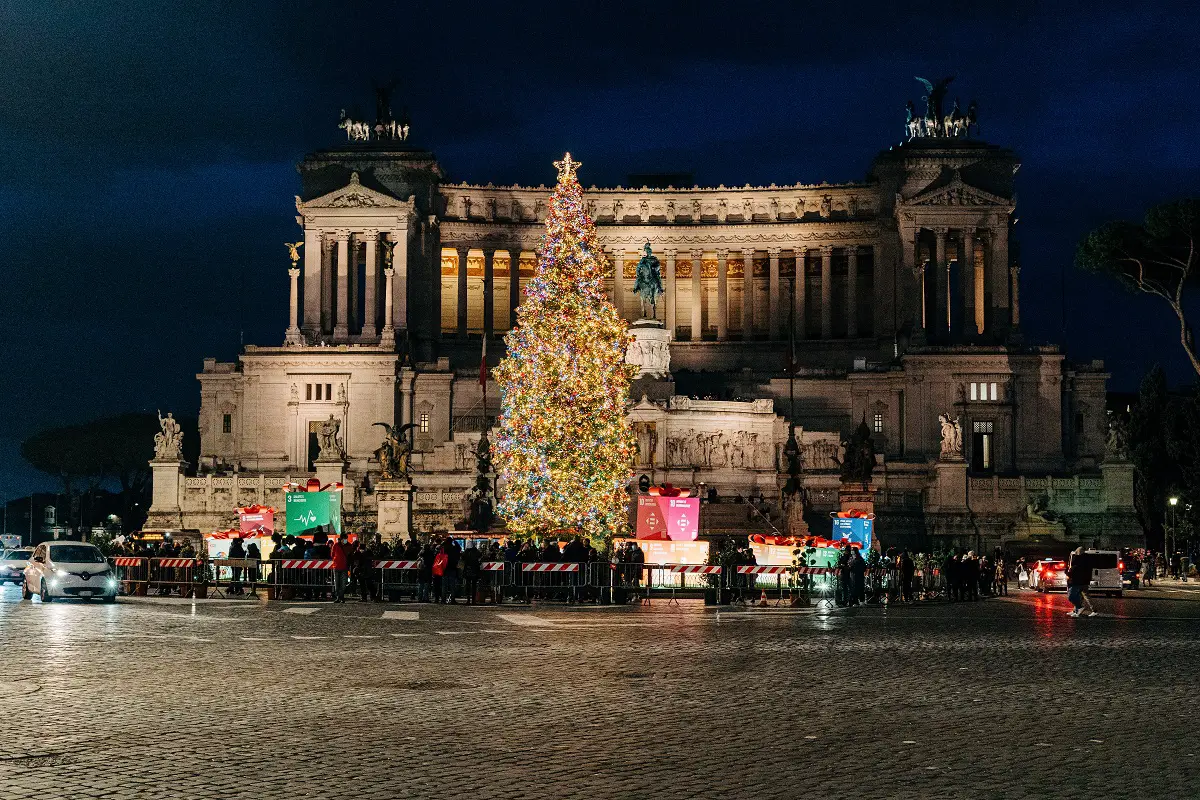
Christmas in Rome is an exciting time of the year! Though there are more tourists visiting the city, you’ll experience a unique Christmas spirit.
The Italian capital is decorated with numerous Christmas displays and lights, including the famous St. Peter’s Square Christmas Tree. You can explore Christmas markets for great deals on shopping, souvenirs, and delicious seasonal streets. The most popular Christmas market in Rome is the one at Piazza Navona, which offers a magical atmosphere with its delightful decorations, numerous stalls, and street musicians playing live music.
Apart from these, you can pay a visit to the Vatican City and join the public in hearing the Pope give a Christmas message and his papal blessing (also called Urbi et Orbi, meaning “to the city and to the world”).
Aside from Christmas, there are other winter festivities that you can check out including Immacolata Concezione — a religious holiday celebrated on the 8th of December.
10. Enjoy great shopping deals
In the months of January and February, stores in Rome offer a winter sale. This is a great opportunity to shop for local and international brands, including luxury goods. Head to Via del Corso, which is the most famous shopping street in Rome. Or take home products from local designers and artisans from stores located throughout the Monti neighborhood, Via dei Giubbonari — a shopper’s delight around Campo de Fiori, and Via dei Coronari which is close to Piazza Navona.
Have this guide on how to spend winter in Rome been helpful to you? If you have questions or comments, let us know in the comment section below!

Katherine Cortes is a long-time backpacker and a freelance writer/editor. She likes beaches, snorkeling trips, and relaxing staycations (preferably with bath tubs!).


